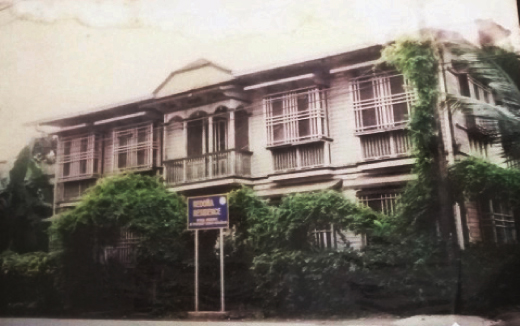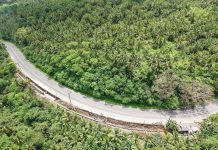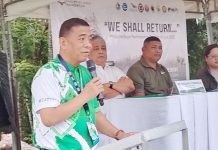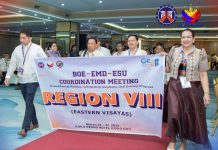
TACLOBAN CITY – For 90-year-old Cristina Redoña-Pablo, celebrating the 75th Leyte Gulf Landings on Oct. 20 is less meaningful now that their house once resided by President Sergio Osmeña is now gone.
Pablo, whose family owns the historic Redoña Residence demolished in March last year, is saddened that the city has lost a historical structure 75 years after Leyte was liberated from Japanese invasion by allied forces led by American General Douglas MacArthur.
“I am disappointed that the house was not officially declared by the National Historical Institute (NHI) as a heritage site despite of the many proofs that it was the residence of Commonwealth President Osmeña after the Liberation of Leyte,” said Pablo, one of the daughters of Margarito Redoña.
Her family decided late last year to tear down the old wooden house on T. Claudio St. due to failure of both the local government and national government to preserve the structure, according to Pablo.
In 2007, Pablo formally asked then NHI Chairman Ambeth Ocampo to declare the house as heritage site. Responding to Pablo’s letter, Ocampo asked for more proofs such as documents and photos.
“We sent a lot of proofs to NHI, but they keep on asking for more and it was not approved. It’s embarrassing to us since there’s no maintenance of that wooden structure. Last year, we decided to tear it down because it’s already dangerous to tourists and by passers. We don’t have enough money to maintain the property,” Pablo told the Philippine News Agency on Thursday.
“It’s a sad thing. The residence played an important role when we were freed from Japanese invasion. It should be given importance,” she added.
The house was the official residence President Osmeña and key Cabinet officials when they stayed in Leyte from October 23, 1944 to February 27, 1945, shortly after Liberation of Leyte.
“I think the President accepted my father’s offer because our house was just few meters away from the capitol. He just walked from the capitol to our residence,” recalled Pablo, who was just 15 years old after the Battle of Leyte.
The capitol building became the seat of the Philippine Commonwealth as the Allied Forces liberated the Philippine Islands from Japanese control.
Osmeña was sworn in as President by MacArthur inside the building, which is now being used as office space by the Leyte provincial government.
Pablo has been keeping documents and photographs of the structure before it was demolished. The most treasured was the photo taken 15 years after the Liberation with President Carlos Garcia and key officials of Leyte province visiting the property.
During the 50th Leyte Gulf Landings Anniversary on Oct. 20, 1944, the residence has been acknowledged as one the “must see” historical sites printed in the commemorative program. Other sites are the Leyte Provincial Capitol, Price Mansion, MacArthur Landing Memorial and Hill 522, both in Palo town.
All sites have been preserved until this year except the Redoña Residence.
On Oct. 20, 1944, MacArthur, at the head of the largest US fleet of transport and warships, and accompanied by Osmeña and Gen. Carlos P. Romulo, landed at Red Beach of nearby Palo town to reclaim the Philippines from the Japanese invaders.
Upon establishing the beachhead, MacArthur immediately transferred authority to Osmeña, the successor of Manuel Quezon, as Philippine Commonwealth president.
The Battle of Leyte Gulf is remembered as the largest naval battle ever fought in modern history. It was fought in four separate engagements near the islands of Leyte, Samar and Luzon from Oct. 23 to 26 in 1944. (SARWELL Q. MENIANO/PNA)



